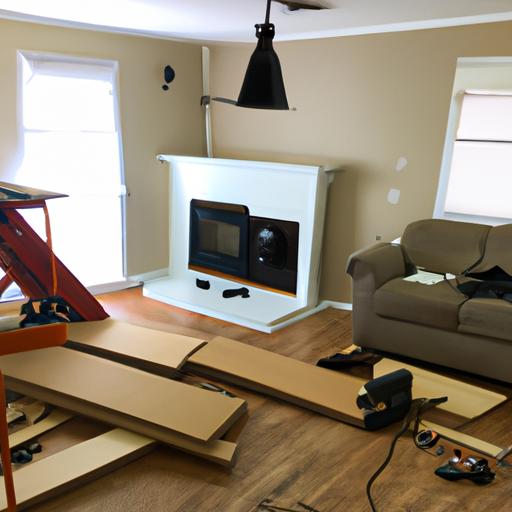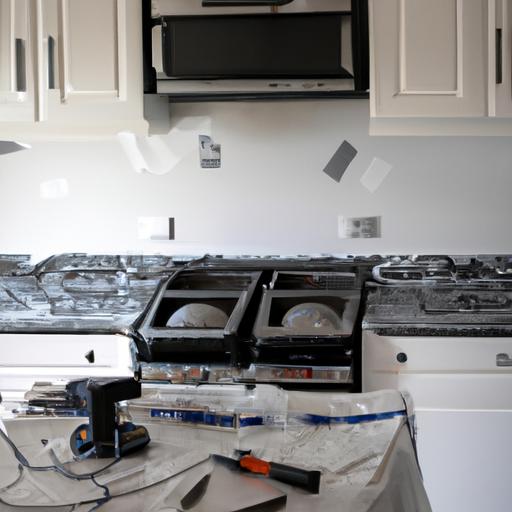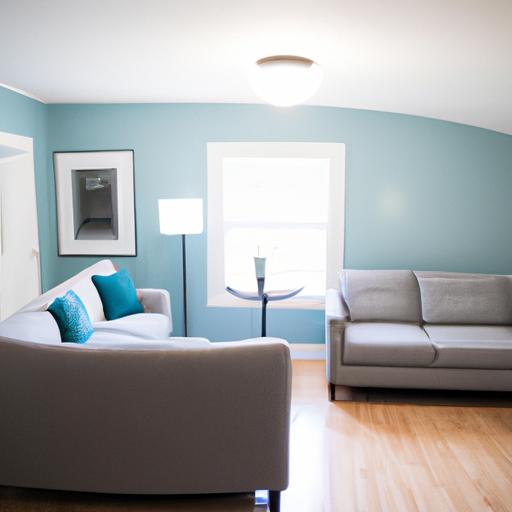Bank Loans for Home Improvements: Transforming Your Space with Financial Support
Introduction
Are you dreaming of renovating your home, but struggling to find the financial means to turn those dreams into reality? That’s where bank loans for home improvements come into play. These loans provide a lifeline for homeowners looking to enhance their living spaces without breaking the bank.
When it comes to home renovations, the costs can quickly add up, from new kitchen appliances to bathroom upgrades and everything in between. This is where securing financing becomes crucial. Bank loans for home improvements offer a structured approach to funding your projects, allowing you to make the necessary upgrades to your home without compromising on quality or design. Let’s delve deeper into the world of bank loans for home improvements and explore why they are essential for turning your renovation visions into tangible results.
Types of Bank Loans Available for Home Improvements
Overview of Personal Loans for Home Improvements
When considering financing options for your home improvement projects, personal loans stand out as a popular choice. These loans are unsecured, meaning you don’t need to put up collateral such as your home or car. Personal loans for home improvements provide flexibility in terms of loan amounts and repayment periods, making them a versatile option for various renovation needs.
Comparison with Home Equity Loans and Lines of Credit
Home equity loans and lines of credit are another avenue for funding home improvements. These loans are secured by the equity in your home, which can result in lower interest rates compared to personal loans. Home equity loans offer a lump sum payment, while lines of credit provide a revolving credit line that you can draw from as needed. Understanding the differences between personal loans and home equity options can help you choose the best financing solution for your specific renovation goals.
Pros and Cons of Each Type of Loan
Each type of loan comes with its own set of advantages and disadvantages. Personal loans offer quick access to funds without risking your assets, but they may come with higher interest rates. On the other hand, home equity loans and lines of credit can offer lower interest rates but require collateral. Evaluating the pros and cons of each loan type can help you make an informed decision that aligns with your financial goals and renovation plans.
Qualifications and Requirements for Bank Loans
Credit Score and Income Requirements
When considering applying for a bank loan for home improvements, one of the first factors to take into account is your credit score. Lenders typically look for a good credit history to assess your ability to repay the loan. A solid credit score demonstrates your past financial responsibility and can increase your chances of loan approval. Additionally, your income level plays a significant role in determining the loan amount you qualify for. Lenders often require a steady income to ensure you can meet the repayment terms.
Documentation Needed to Apply for a Bank Loan
To streamline the loan application process, it is essential to gather the necessary documentation beforehand. Common documents required for a bank loan application include proof of income, such as pay stubs or tax returns, as well as identification documents like a driver’s license or passport. Additionally, lenders may request information regarding your existing debts and assets to assess your overall financial health. Having these documents readily available can expedite the loan approval process and demonstrate your readiness to commit to the loan terms.
Factors That Can Impact Loan Approval
Several factors can influence the approval of your bank loan for home improvements. In addition to credit score and income level, lenders may consider your debt-to-income ratio, employment history, and the loan amount you are requesting. Maintaining a low debt-to-income ratio and a stable employment record can strengthen your application. Understanding the various factors that lenders evaluate can help you prepare a strong application and increase your chances of securing the financing needed for your home renovation projects.
Choosing the Right Bank for a Home Improvement Loan
Researching and Comparing Loan Options
When embarking on your home improvement journey, the first step is to research and compare loan options from different banks. Take the time to explore the various offerings available, considering factors such as loan amounts, interest rates, and repayment terms. By comparing the options, you can ensure that you find a loan that aligns with your financial needs and goals.
Considering Interest Rates, Fees, and Repayment Terms
One of the key aspects to consider when choosing a bank for a home improvement loan is the interest rates, fees, and repayment terms associated with the loan. Lower interest rates can save you money in the long run, while understanding the fees involved can help you avoid any surprises down the line. Additionally, evaluating the repayment terms will give you a clear picture of how the loan will impact your financial situation.
Reading Reviews and Seeking Recommendations
To gain insight into the reputation and customer service of different banks offering home improvement loans, reading reviews and seeking recommendations from others can be invaluable. Hearing about others’ experiences can provide you with valuable information that can guide your decision-making process. Whether through online reviews or word-of-mouth recommendations, gathering feedback from others can help you choose a bank that you can trust with your home improvement financing needs.
Tips for Maximizing the Benefits of a Bank Loan for Home Improvements
Creating a Budget and Sticking to It
When embarking on a home improvement project with a bank loan, creating a detailed budget is crucial. Outline all the expenses involved, from materials and labor costs to permits and design fees. By setting a budget from the outset, you can better manage your finances and avoid overspending. Remember to factor in a buffer for unexpected costs that may arise during the renovation process.
Using the Loan to Increase the Value of Your Home
One of the key benefits of utilizing a bank loan for home improvements is the potential to increase the value of your property. When deciding where to allocate the funds, prioritize projects that will enhance the overall value of your home. This could include upgrading kitchens and bathrooms, adding energy-efficient features, or improving curb appeal. Investing in these areas can not only make your living space more enjoyable but also boost your home’s resale value in the long run.
Planning for Unexpected Expenses and Contingencies
No matter how well you plan, unexpected expenses can still arise during a home renovation. Be prepared for contingencies by setting aside a portion of your loan for unforeseen costs. Whether it’s uncovering hidden damage or encountering delays in construction, having a financial safety net in place will help you navigate any challenges that come your way. By planning for contingencies, you can ensure that your home improvement project stays on track and within budget.
Conclusion
In conclusion, bank loans for home improvements serve as a valuable tool for homeowners looking to revamp their living spaces. By providing the necessary financial support, these loans enable you to embark on renovation projects with confidence and peace of mind. Whether you’re upgrading your kitchen, renovating your bathroom, or adding a new room to your home, bank loans offer a flexible and convenient way to fund your dreams.
Remember, when considering bank loans for home improvements, it’s essential to research and compare options from different financial institutions to find the best fit for your needs. By creating a budget, planning wisely, and maximizing the benefits of your loan, you can transform your home into the space of your dreams. So, why wait? Take the first step towards enhancing your living environment today with the help of bank loans for home improvements.






